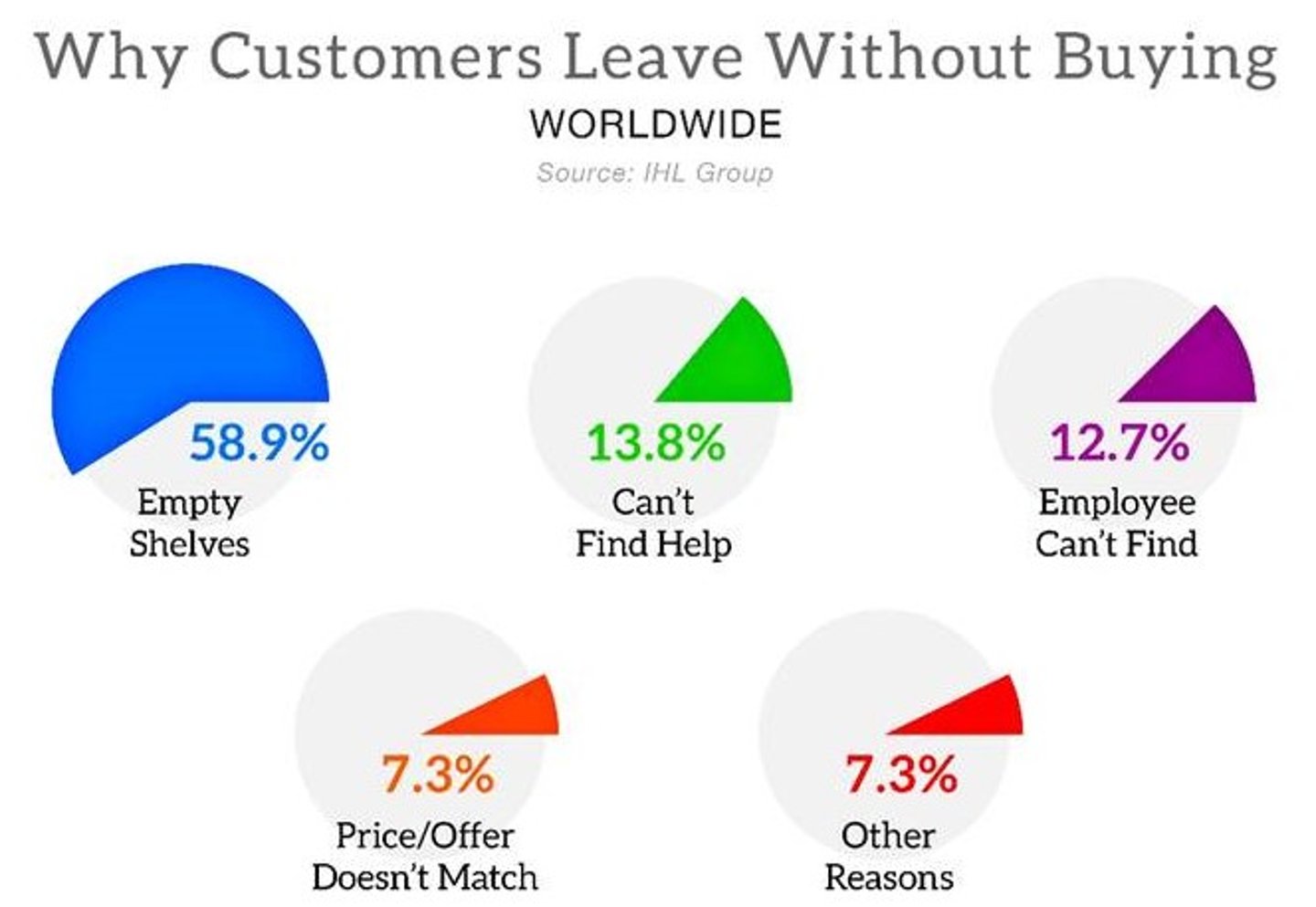1 in 5 Items Consumers Want Is Out of Stock at Local Stores
The gap between what shoppers want to buy at their local retailers and what they actually do purchase continues to drive discontent, according to research from analyst firm IHL Group. The total cost to retailers for inventory distortion – the combined cost of overstocks and out-of-stocks – comes to $349 billion in lost sales for North American retailers in 2022.
“While there have been considerable improvements in systems and processes in recent years, labor challenges and continued supply chain disruptions issues continue to frustrate both consumers and retailers,” noted Greg Buzek, president of Franklin, Tenn.-based IHL. “In addition, challenges from theft, mistakes by employees, and spoilage cause retailer’s inventory counts to be off as much as 25%, resulting in consumers having a shopping experience where they left the stores without buying one in every five items they planned to buy.”
[Read more: "Which Product Shortages Are Finally Seeing Relief?:]
IHL’s research study, “Can Retailers Handle the Truth? – True Cost of Out-of-Stocks and Overstocks” featured consumers’ reasons for leaving stores without buying items they intended to purchase, other than that the price was too high. These reasons ranged from sizes not being available, lack of employees to help, items locked up or in the stockroom, or empty shelves. The research also examines the cost of overstocked merchandise, which is merchandise that was misforecast or didn’t arrive in time for the season and then had to be heavily discounted.
The news isn’t all grim, though. The research also found that the lost sales to retailers from out-of-stocks plunged 29.6% in fast-moving consumer goods categories from 2020 to 2022 as better systems and less panic buying resulted in shelves with more product. Alternatively, the costs of overstocks grew 23.6% following the abrupt change in consumer spending caused by the war in Ukraine and higher inflation, leaving major retailers with excess seasonal merchandise.
Additional research highlights are as follows:
- Supplier issues are far and away the largest causes of inventory distortion in 2022, amounting to $129.2 billion in sales losses in North America, a 150% increase from 2020.
- Personnel issues – either not having enough employees or inadequate training – led to $63 billion in sales losses, a 54% increase from 2020.
- Losses from COVID lockdowns decreased by more than $103.8 billion, improving almost 80% from 2020.
- Better systems and processes by retailers helped them recapture $15.1 billion in sales that were otherwise lost in 2020
Thanks to distribution partnerships with sponsors IBM, Zebra, SES-imagotag, ToolsGroup and Itasca, the independent research study is available online free.






